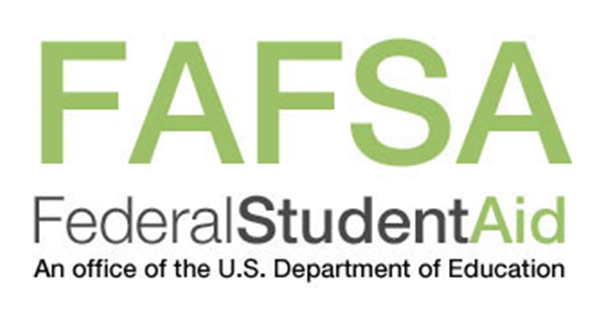The Ultimate Guide to Getting a Free Online Master's Degree (Yes, Really)
Let’s be frank: That headline sets up a pretty big promise. But the promise is a real one—it is possible to get a free master’s degree online. Of course, it won't be as easy as snapping your fingers and collecting your credential—this strategy will take some work and planning, but you probably already assumed that.
However, if you can increase your value in the workplace without accruing thousands of dollars of debt, then the effort may be far outweighed by the reward.

Before we dive in, it's important to note that not every strategy will work for every person. Also, many people will have to employ a mix of strategies to cobble together the puzzle pieces that eventually lead you to a free degree.
Step 1 (Option A): Get a job with tuition reimbursement
If you think this advice is easier said than done, you might want to adjust your expectations. In fact, 54% of companies offer tuition reimbursement, according to a study by the Society of Human Resource Management.
Even better, some companies offer reimbursement to part-time employees as well as full-time workers.
Why are companies so generous with something that costs them money? Keep in mind, tuition reimbursement is a big win for employers for two reasons:
- Employers get the benefit of having workers with up-to-date skills sets without having to hire new people. And remember, hiring is expensive. Not only do companies need to pay recruiters, they lose a lot of productive time during the hiring process in terms of writing job descriptions and conducting interviews. Then, it generally takes weeks to months for a new employee to get completely up-to-speed. It's in employers' best interests to cultivate the people they already have in-house and invest in them.
- Employers can take a tax deduction of $5,250 per worker for tuition reimbursement. For that reason alone, reimbursement makes total sense for many employers. (Bonus: Any reimbursement up to that amount is not taxable to you. However, payments above and beyond that amount annually may need to be reported as income.)
In general, tuition reimbursement programs will have some requirements that you'll need to adhere to to remain eligible. That typically includes things like maintaining a B average and staying with the company a certain amount of time after you complete your studies. You'll also probably be expected to show that your course of study pertains directly to your job duties.
30 employers that offer tuition reimbursement

Here's a list of some well-known companies to get you started:
Fast food:
- Taco Bell
- McDonald's
- Chipotle
- Starbucks
- Dunkin' Donuts
Retail:
- Publix
- Home Depot
- Best Buy
- Wal-Mart
- Lowe's
Technology:
- Apple
- Microsoft
- Oracle
Services:
- UPS
- FedEx
- Bank of America
- Wells Fargo
- UnitedHealth Group
- Anthem Blue Cross/Blue Shield
- Fidelity
- Charter Communications
Other large corporations:
- BP
- Procter and Gamble
- JM Smucker
- JetBlue
- Fiat Chrysler
- Disney
- AT&T
- Boeing
- T-Mobile
Source: The Motley Fool
Step 1 (Option B): Convince your current employer to reimburse you

It never hurts to ask, right?
Make sure to prepare your case in advance. Go in armed with the federal tax-deduction info above. Research tax deductions in your state as well — some states offer additional deductions.
Then, be sure to explain which classes you intend on taking and how your new knowledge can be useful to the company. Tie your coursework to your current job duties, or to job duties that you'd like to take on. If you connect the dots for your employer by showing exactly how your studies will benefit the company, you'll have a better chance of success.
Example: "Studying advertising analytics will help us better target our media buys to increase revenue. That will allow us to work more effectively with our ad agency, and perhaps be able to absorb certain functions in-house instead of paying vendors."
2. Apply for financial aid

Did you know that there's no age limit on getting a Pell Grant, or on federal financial aid in general? Even better, many online colleges accept financial aid.
So, just like you did back in your undergrad days, fill out the FAFSA, a.k.a., the Free Application for Federal Student Aid to find out if you're eligible to grants or low-interest federal student loans. Even if you're not, remember that colleges and universities also use the FAFSA to determine eligibility for financial aid, and you definitely don't want to miss out on those opportunities. (See our guide for completing the FAFSA to get started. )
The best part is that adult learners can generally receive federal financial aid, even if you already have student loans that you're still paying off (and aren't in default), or if you have bad credit.
One thing to keep in mind with online schools: It's important to be aware that not all online colleges accept FAFSA. Before you apply to any school, check the financial aid page on their website. There, you can often quickly find out what forms of financial aid are accepted. You can also pick up the phone and call the financial aid department.
See also: Are Online Colleges Legit? How to Avoid Scams and Find Reputable Online Schools
You may see that some online colleges claim that they don't accept financial aid because their tuition prices are already low. That may be the case, but remember that "low" and "free" are not the same. A school that may have a higher sticker price may actually be a better value once you factor in financial aid.
3. Apply for scholarships

Here's a figure to chew on: Every year, about $100 million in scholarship money goes unclaimed. Why not get in on that action and claim some it for your own?
Download the Scholly app and take a look at which scholarships you may qualify for. You may be surprised.
Remember, scholarships of any amount reduce the total you're paying out of pocket or financing with student loans.
4. Get creative

Think about your own personal circumstances and how you can redirect money that may be coming your way.
For example, if your parents were going to contribute to a wedding fund, perhaps you could ask them to put that money toward grad school instead, and scale down some of your wedding plans. (There is some evidence that cheaper weddings lead to lower divorce rates anyway.)
If you have a relative who was going to give you money toward a house down payment, you could ask to redirect those funds and briefly delay purchasing a house. After you have your master's, you may be more likely to earn a higher salary, which could impact the type of home you'd like to buy.
While these methods aren't exactly free, they do reduce the price that you would be paying with money that you weren't going to have in your pocket anyway.
Similarly, you earmark money from a tax return.
Take the long view
Yes, the strategies we've outlined here may involve a bit of legwork in the short term, but in the long run, investing the time to earn your master's for free (or even close to free) can yield a huge payoff in your future.